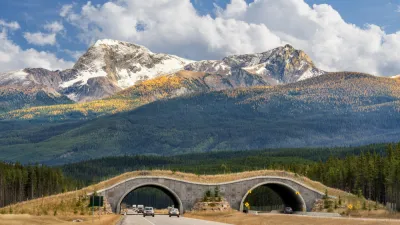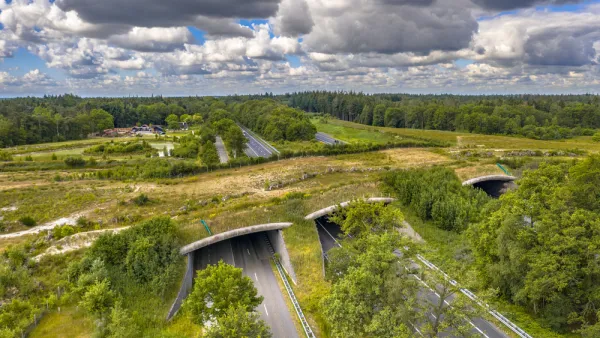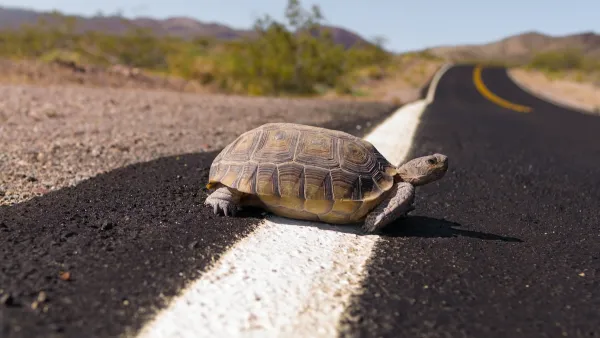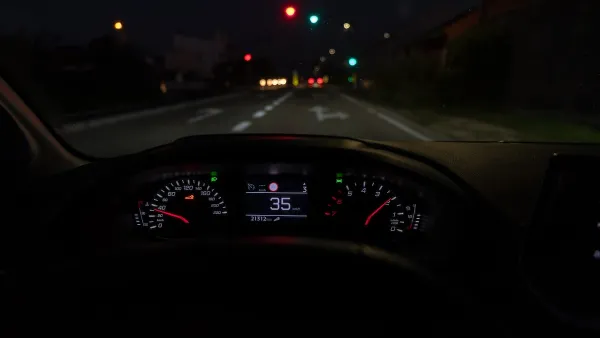Animal-vehicle collisions cause billions in property damage, hundreds of human deaths, and dramatic losses in animal populations every year. Monitoring migration and building for animals can make roads safer for everyone.

Writing in Governing, Matt Skroch explains the value of investing in wildlife crossings and other infrastructure projects that help urban and regional planners understand wildlife migration patterns and protect animals from traffic collisions.
According to Skroch, “These accidents lead to some 200 human deaths and 26,000 injuries each year, resulting in more than $8 billion in property damage, health-care costs and lost workdays, according to the U.S. Department of Transportation.” For the animals, and the industries that depend on them, the news is equally bad. “In Wyoming, for example, the mule deer population, which supports more than $300 million in annual hunting-related spending in the state, has decreased by 40 percent since 2000, due in large part to habitat fragmentation caused by roads and development.”
Yet Skroch writes that “Advances in research technology over the past decade have revolutionized experts’ understanding of how wildlife move across landscapes and are now helping to resolve wildlife-vehicle conflicts that are rising due to increased development.” Today, GPS collars and well-placed under- or overpasses can help researchers understand movement patterns and keep animals out of harm’s way.
“In the face of climate change, sustaining these landscape connections is more important than ever, as it helps provide greater ecosystem resilience for species that migrate between habitats,” Skroch argues. Federal officials have taken note. “On the federal level, the Infrastructure Investment and Jobs Act of 2021 includes billions of dollars over five years for wildlife and aquatic connectivity programs, along with $350 million for a new wildlife-crossing construction program.” In Los Angeles, the world’s largest wildlife crossing broke ground earlier this year.
FULL STORY: The Dreadful Toll of Wildlife-Vehicle Collisions — and What We Can Do About It

Analysis: Cybertruck Fatality Rate Far Exceeds That of Ford Pinto
The Tesla Cybertruck was recalled seven times last year.

National Parks Layoffs Will Cause Communities to Lose Billions
Thousands of essential park workers were laid off this week, just before the busy spring break season.

Retro-silient?: America’s First “Eco-burb,” The Woodlands Turns 50
A master-planned community north of Houston offers lessons on green infrastructure and resilient design, but falls short of its founder’s lofty affordability and walkability goals.

Test News Post 1
This is a summary

Analysis: Cybertruck Fatality Rate Far Exceeds That of Ford Pinto
The Tesla Cybertruck was recalled seven times last year.

Test News Headline 46
Test for the image on the front page.
Urban Design for Planners 1: Software Tools
This six-course series explores essential urban design concepts using open source software and equips planners with the tools they need to participate fully in the urban design process.
Planning for Universal Design
Learn the tools for implementing Universal Design in planning regulations.
EMC Planning Group, Inc.
Planetizen
Planetizen
Mpact (formerly Rail~Volution)
Great Falls Development Authority, Inc.
HUDs Office of Policy Development and Research
NYU Wagner Graduate School of Public Service




























